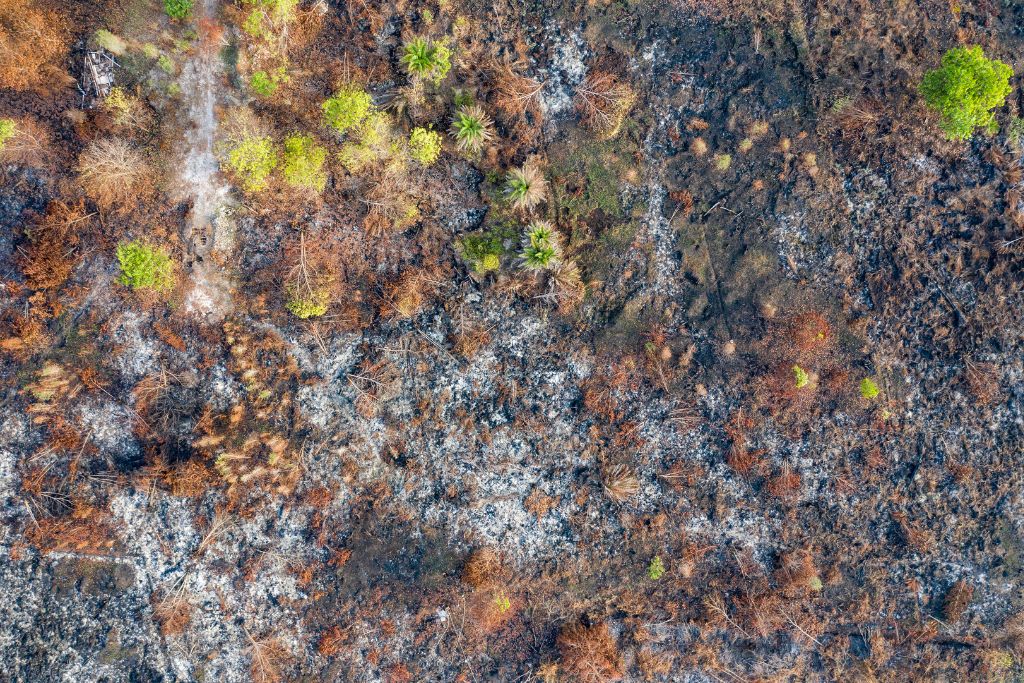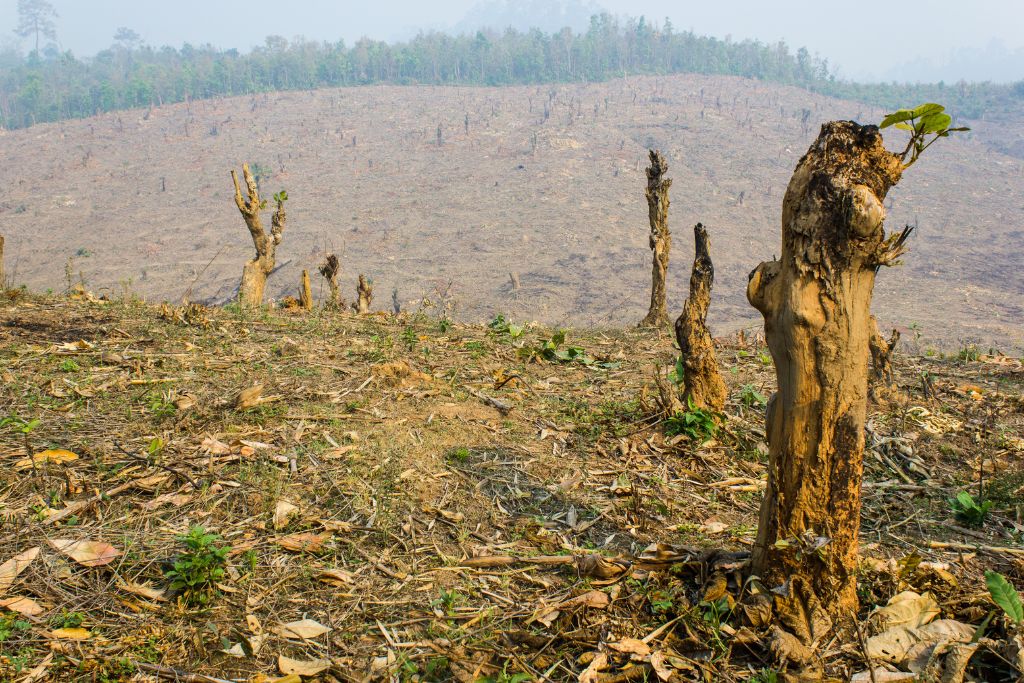Being one of the biggest environmental issues of the 21st century, countries are currently going out of their way to map out policies and seek collaborations to slow down the pace of global warming, after witnessing extreme droughts, heatwaves, and flooding events unfolding in every single corner across the globe. Forests, which cover over 30% of the world’s surface, are a crucial member in combating global warming. While forest loss is just one of the many triggers of climate change, it remains one of the most threatening. But why exactly is deforestation a major problem in terms of its effect on global warming?
—
What is Deforestation?
Deforestation refers to the intentional clearing of forest lands for urban expansion, cattle farming, agricultural cropland, and other human purposes. To meet the needs of the rapidly growing human population and protect global food supplies, agricultural expansion has occurred on a massive scale, accounting for 90% of deforestation worldwide. Between 1900 and 2018, the total forest lost – a staggering 2 billion hectares – was equivalent to that lost in the past 9,000 years.
Agricultural land is mainly utilised for cattle ranching and monoculture farming with commercial purposes, such as growing palm trees for palm oil production. Deforestation is especially widespread in South America – specifically in the Amazon Basin – and South East Asia, due to the presence of immense tropical rainforests and lack of monitoring. However, this should ring the alarm before the situation goes terribly out of control.
To answer the question of why deforestation is a major problem in terms of its effect on global warming, we take a look at 3 threats that forest loss poses to our environment and climate.
You might also like: 10 Deforestation Facts You Should Know About

Image 1: Deforestation for agricultural expansion. Source: Our World in Data
1. Deforestation Affects the Carbon Cycle
Carbon is one of the foundation elements of everything we see around us, including all living organisms on Earth. It exists in gas or solid form, with examples of the latter including rocks and sediments.
The carbon cycle describes the process in which carbon atoms continually travel from the atmosphere into different organisms on Earth and then back into the atmosphere, over and over again. These atoms encounter several major reservoirs along the cycle, including the atmosphere, oceans, lithosphere, terrestrial biosphere, aquatic biosphere, as well as fossil fuels. These reservoirs can be deemed as ‘agents’ that carry the carbon. However, since the exchange is happening in a closed system, meaning the cycle takes place on Earth only, the total budget of carbon does not change just like energy. It will only be transferred to another ‘agent’, for example, the carbon moved from the lithosphere to the atmosphere when fossil fuels are burnt, or even during volcanic eruptions. In the event of a major disparity in the amount held by different ‘agents’, such as if the biosphere releases most of its carbon to the atmosphere, the phenomenon becomes a catalyst of global warming.

Image 2: The Carbon Cycle. Source: NOAA
The ocean, forest, and soil are the biggest carbon sinks on Earth since they contain and absorb tremendous amounts of carbon dioxide and store them for prolonged periods of times. According to the National Oceanic and Atmospheric Administration, the Amazon forest alone store around 123 billion tons of carbon above and below the surface. Both abiotic and biotic components, such as rocks and even seemingly unimportant animals, are all collectively sequestering carbon in their bodies. Unfortunately, deforestation creates a direct disequilibrium in the carbon cycle.
While plants take the first hit in the event of deforestation, subsequently animals which rely on the vegetation are also wiped out. Land becomes barren and lifeless. Similarlly, as living organisms are slaughtered, the active carbon stored inside them is released into the atmosphere quickly, exacerbating the pace of global warming.
A report found that between 2015 and 2017, the gross emission of carbon due to tree loss was 4.8 billion tons annually. The total amount of carbon emissions from forest loss produced in just one year is equivalent to what 85 million cars would produce over their lifetime.
You might also like: How Does Deforestation Affect the Carbon Cycle?
2. Deforestation Releases Huge Quantities of Greenhouse Gasses
Over 80% of deforestation is directly associated with agricultural development. Slash and burn is the main deforestation method to expand agricultural land, for example through shifting cultivation and plantation. Normally, tropical farmers would clear the land on a massive scale by burning and cutting trees down. Vegetation burnt into ashes acts as a fertiliser.

Slash and burn
Modern shifting cultivation accounts for 50 acres of forest land loss every hour. Nevertheless, the land is not going to be fertilised permanently; after just two years, nutrients in the soil will be drained, forcing farmers to find another piece of land. The vicious cycle goes on consistently. While carbon stored in living organisms is released into the atmosphere when they decay, the fire used in the slash-and-burn process also bumps smoke, another source of CO2, into the air.
The total amount of carbon released during this process is estimated at over 1.5 billion tons of carbon are released caused by the slash and burn process. Compared to the traditional technique, which is practiced by aboriginal people aiming to revert land into secondary forest, modern slash and burn cultivation does not take forest regeneration into account. Enormous amounts of land are turned into permanently infertile, barren land due to the colossal scale of, among others, oil palm tree planting and cattle raising.
Agricultural practices do not only generate carbon dioxide emissions. Other gases are also released, including nitrous oxide and methane – a gas 84 times more potent in trapping heat than carbon dioxide over a two-decade period.
Rice cultivation alone makes up 12% of global methane emission, and this without taking fertilisers, pesticides, and other chemicals used in the cultivation process into account. Livestock farming is even more devastating, generating about 27% of global methane emissions. It is estimated that every single cow produces 220 pounds (100 kilograms) of methane in a single year.
3. Forests Turn From Carbon Sinks to Carbon Sources
Over the past 4 decades, forests have absorbed an estimated 2.4 billion metric tons of human-triggered carbon emission globally, with the Amazon alone, the world’s largest rainforest, responsible for 25% of the total absorption.
These statistics reflect the vital role of global forests in the scenario of fighting against climate change. Unfortunately, as the Food and Agricultural Organization (FAO) estimates, the world loses 10 million hectares of forest annually, equivalent to 300 football fields being cleared every hour. In other words, humans are wreaking havoc on one of the major systems that maintain the balance of climate, dumping one of the most salient weapons that is designed to combat global warming.
In the past four decades, around 17% of the Amazon forest has vanished. Scientists have warned that if forest loss reaches up to 25%, it will reach a tipping point where the lush rainforest might turn into a dried, dead savanna, due to the absence of rainfall, biome, and other vital factors in the ecosystem.
You might also like: The Tipping Points of Climate Change: How Will Our World Change?
Future Outlook
With the global population recently hitting the 8 billion mark and expected to keep growing in the coming decades, the demand for food and other resources is inevitably going to increase as well, resulting in further deforestation.
As consumers, we might not realise that our habits and behaviours directly influence the fate of our forests and our planet as a whole. According to the Food and Agriculture Organization (FAO), global livestock accounts for 14.5% of all anthropogenic greenhouse gas emissions, equivalent to roughly 7.1 gigatonnes every year. Farms are responsible for enormous amounts of emissions – including methane, nitrous oxide, and carbon dioxide – which are all powerful facilitators of global warming. A study has revealed that a shift to a plant-based diet projected reductions in global mortality and greenhouse gases caused by food production by 10% and 70% respectively, compared with a control scenario set in 2050. Undoubtedly, replacing meat with more veggies can help discourage forest clearing, thereby decreasing emissions from meat production in the long run.
For governments, a complete prohibition on deforestation is neither realistic nor feasible, since it is going to affect the livelihoods and interests of an array of stakeholders such as farmers, butchers, and even grocery stores. However, strategies such as REDD+, a sustainable development framework for addressing the drivers of deforestation and forest degradation established by the United Nations Framework Convention on Climate Change (UNFCCC), can create significant impacts on deforestation. The strategy helped reduce deforestation in several countries. Colombia, for example, has preserved more than 1 million hectares of natural forests under the framework. Congo, Indonesia, and Brazil, who together account for over half of the world’s rainforests, have recently signed the Rainforest Protection Pact and pledged to conserve rainforests. As the dangers climate crisis become increasingly visible, we have to hope that nations will realise they have no choice but step up their game in protecting our forests.
You might also like: World Is Not On Track to Meet Global Deforestation Pledge Goal by 2030: Study

















